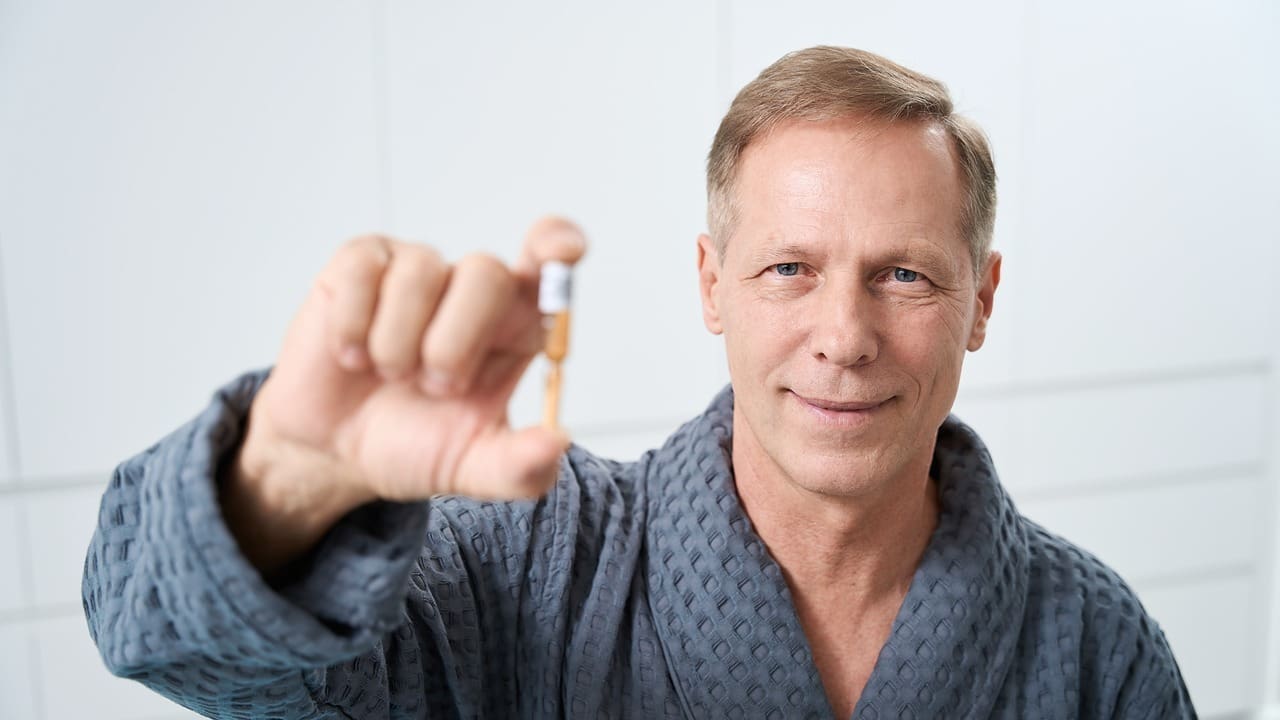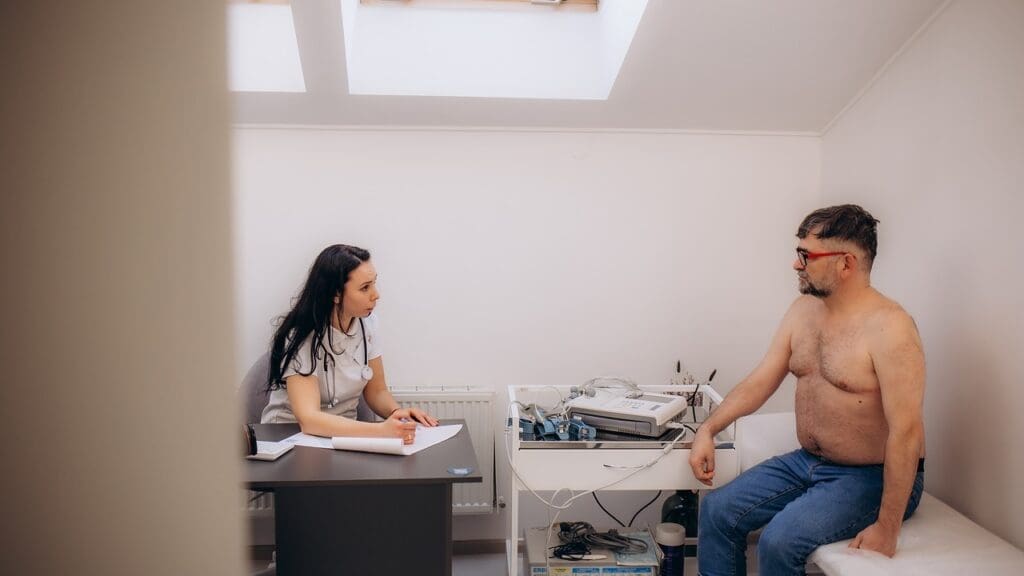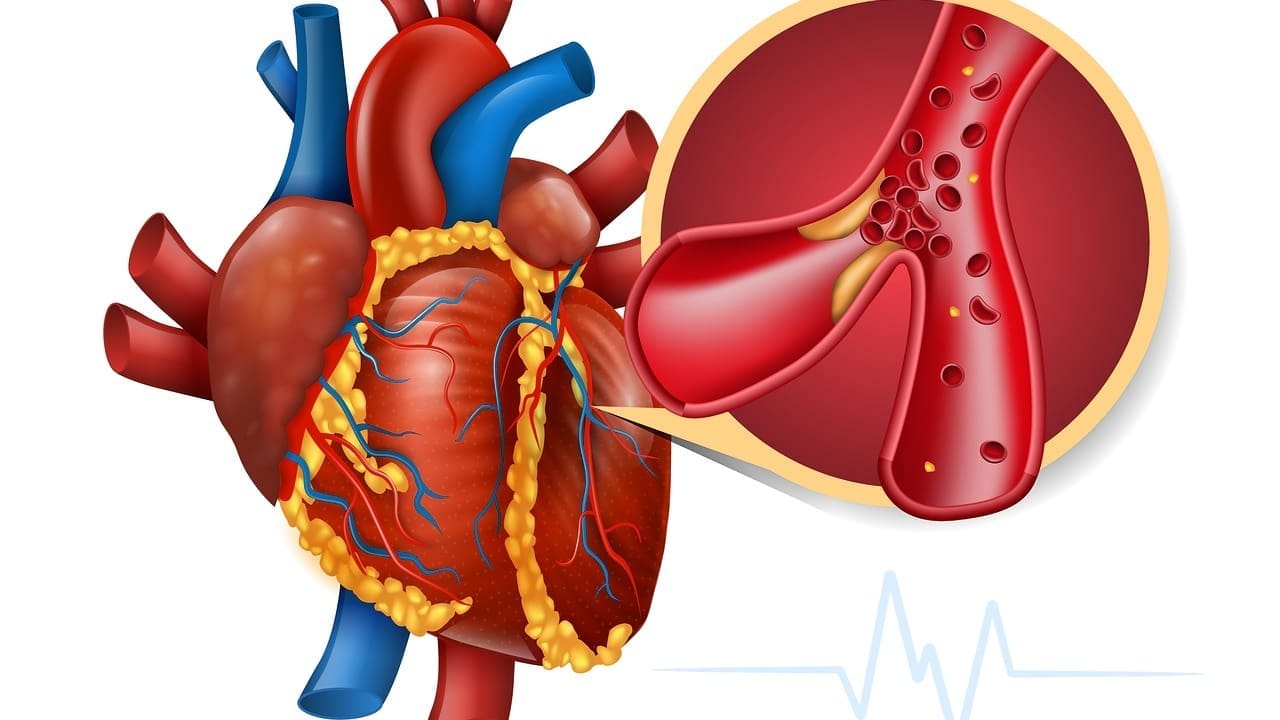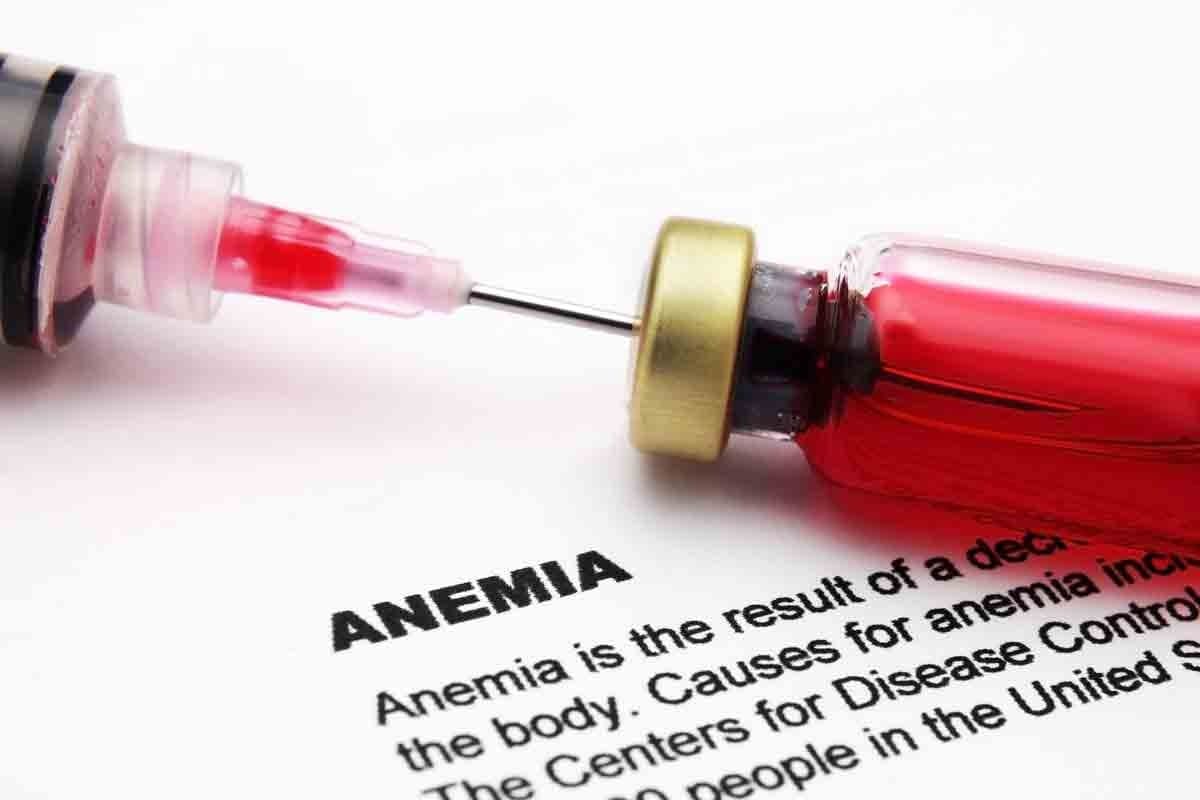Last Updated on November 26, 2025 by Bilal Hasdemir

At Liv Hospital, we know how vital effective treatments are for advanced prostate cancer. Androgen deprivation therapy (ADT) is a key treatment. It lowers male hormones to slow cancer cells growth.
We have many hormone therapy choices, like 6-month injections and advanced treatments. Our team is dedicated to giving you personalized care and support during your treatment.
Key Takeaways
- ADT is a critical component of prostate cancer treatment.
- Hormone therapy drugs are designed to reduce male hormone levels.
- Various injection schedules are available, including 6-month injections.
- Personalized care is essential for effective treatment.
- Liv Hospital provides internationally trusted care and support.
Understanding Androgen Deprivation Therapy (ADT) for Prostate Cancer
ADT, or Androgen Deprivation Therapy, is a key treatment for prostate cancer. It aims to lower the hormone testosterone, which helps cancer cells grow. We’ll look at how ADT works, its role in fighting cancer, and when it’s used in treatment.
The Role of Testosterone in Prostate Cancer Growth
Testosterone is a hormone that helps prostate cancer cells grow. These cells need testosterone to grow. So, lowering this hormone is a main goal in treating prostate cancer.
How Hormone Therapy Works to Control Cancer
Hormone therapy, like ADT, lowers testosterone levels. This stops prostate cancer cells from getting the hormone they need to grow. Medications block testosterone production or its action on cancer cells.
When ADT Is Recommended in the Treatment Journey
ADT is suggested at different times in prostate cancer treatment. It depends on the cancer’s stage and the patient’s health. It can be used alone or with other treatments like radiation or chemotherapy.
The following table summarizes the key aspects of ADT in prostate cancer treatment:
| Aspect | Description | Benefit |
|---|---|---|
| Testosterone Reduction | ADT suppresses testosterone production | Slows down or stops cancer cell growth |
| Treatment Stages | Used at various stages of prostate cancer | Flexible treatment approach |
| Combination Therapy | Can be used with radiation or chemotherapy | Enhanced treatment effectiveness |
Understanding ADT and its role in prostate cancer treatment helps patients make better choices. They can work with their doctors to find the best treatment plan.
How Hormone Shots for Prostate Cancer Suppress Testosterone
Hormone shots are key in treating prostate cancer by lowering testosterone. We’ll look at how these shots work to cut down testosterone levels. This is a big part of fighting the disease.
The Hormonal Pathway: From Brain to Testicles
The hormonal pathway is a complex series of signals. It starts in the brain and ends in the testicles, where testosterone is made. LHRH (Luteinizing Hormone-Releasing Hormone) agonists and antagonists are drugs that target this pathway to lower testosterone.
The journey starts with the hypothalamus releasing LHRH. This hormone makes the pituitary gland release LH. LH then tells the testicles to make testosterone. Hormone shots, with LHRH agonists or antagonists, interrupt this process, reducing testosterone.
Mechanism of Action in Reducing Testosterone Levels
LHRH agonists first boost LH and testosterone levels. But, long-term use lowers LHRH receptors. This leads to less LH and testosterone. LHRH antagonists, on the other hand, block LHRH right away, quickly lowering testosterone without the initial rise.
-Dr. “LHRH agonists and antagonists have changed prostate cancer treatment. They effectively lower testosterone levels.”
“Hormone therapy is a cornerstone in the management of advanced prostate cancer, providing significant benefits in disease control and symptom relief.”
Measuring Treatment Effectiveness Through Blood Tests
How well hormone therapy works is checked with blood tests. These tests look at PSA (Prostate-Specific Antigen) and testosterone levels. A drop in PSA means the treatment is working.
| Test | Purpose | Frequency |
|---|---|---|
| PSA Test | Monitor disease progression | Every 3-6 months |
| Testosterone Test | Assess hormone suppression | Every 6-12 months |
By checking these levels often, doctors can adjust treatments. This helps manage the disease better.
Types of Hormone Therapy Drugs for Prostate Cancer
There are many hormone therapy drugs for prostate cancer. They help by lowering testosterone levels or blocking its effects. This is key in managing the disease.
LHRH Agonists: Leuprolide, Goserelin, and Triptorelin
LHRH agonists first increase testosterone production but then lower it. Leuprolide, goserelin, and triptorelin are common in prostate cancer treatment. They are given by injection, usually monthly or every three months.
LHRH Antagonists: Degarelix and Relugolix
LHRH antagonists like degarelix and relugolix block testosterone production right away. They offer a quick testosterone drop for some patients.
Anti-Androgens and Their Role in Complete Androgen Blockade
Anti-androgens block testosterone’s action on cancer cells. Used with LHRH drugs, they create a complete androgen blockade. This reduces testosterone’s growth effect on cancer cells.
Newer Generation Hormone Therapies: Abiraterone and Enzalutamide
New hormone therapies like abiraterone and enzalutamide target prostate cancer better. Abiraterone stops testosterone production, while enzalutamide blocks its action on cancer cells. These drugs have greatly helped advanced prostate cancer patients.
In summary, many hormone therapy drugs are used for prostate cancer. Each has its own way of working and benefits. Knowing about these drugs helps patients and doctors choose the best treatment.
Injection Schedules and Administration Methods
Androgen deprivation therapy (ADT) for prostate cancer comes in many forms. This helps patients stick to their treatment plans. Each patient is unique, so we offer different schedules to fit their needs.
Prostate Cancer Injections Every 6 Months: Benefits of Extended Formulations
Extended hormone shots for prostate cancer are given every 6 months. They have many benefits. For example, they reduce the need for frequent injections and make it easier for patients to follow their treatment plans.
Key benefits of extended formulations include:
- Reduced number of clinic visits
- Less discomfort from frequent injections
- Improved adherence to treatment plans
Monthly, Quarterly, and Semi-Annual Options
There are many ADT injection schedules, like monthly, quarterly, and semi-annual. Each has its own advantages and things to consider. This lets doctors create treatment plans that are just right for each patient.
| Injection Schedule | Benefits | Considerations |
|---|---|---|
| Monthly | Maintains consistent drug levels | Requires frequent clinic visits |
| Quarterly | Balances convenience and efficacy | May have higher initial drug concentration |
| Semi-Annual | Maximizes patient convenience | Potential for fluctuations in drug levels |
Administration Techniques and Injection Sites
Administering hormone shots for prostate cancer requires specific techniques and sites. Doctors are trained to do this safely and effectively. This helps reduce discomfort and side effects.
Transitioning Between Different Schedules
Sometimes, patients need to switch between different injection schedules. This decision is based on how the patient responds, any side effects, and other clinical factors. Doctors keep a close eye on patients during these changes to ensure the treatment works well and side effects are kept low.
Managing prostate cancer treatment is complex, including choosing the right injection schedule. By providing various options, we can make treatment plans that fit each patient’s needs. This improves care and outcomes.
Clinical Benefits of Hormone Therapy for Prostate Cancer
Hormone therapy is a key treatment for prostate cancer. It lowers testosterone, slowing cancer cell growth. This leads to better results for patients.
Survival Advantages in Different Disease Stages
Hormone therapy boosts survival rates, mainly when paired with other treatments. It’s shown to increase survival in advanced prostate cancer.
A study found ADT can raise survival by up to 30% in metastatic prostate cancer. Lower testosterone levels slow cancer growth.
| Disease Stage | Survival Benefit |
|---|---|
| Localized | Improved local control |
| Locally Advanced | Enhanced overall survival |
| Metastatic | Significant improvement in overall survival |
PSA Response and Disease Control
Hormone therapy lowers PSA levels, a key disease control indicator. It slows or stops cancer cell growth, reducing PSA.
A big PSA drop with hormone therapy means better outcomes. Regular PSA checks help doctors adjust treatment plans.
“The use of hormone therapy in prostate cancer has revolutionized the management of this disease, improving survival and quality of life.”
Symptom Relief in Advanced Disease
In advanced prostate cancer, hormone therapy relieves symptoms. It reduces testosterone, easing bone pain, urinary issues, and spinal compression.
Relieving symptoms improves life quality for those with advanced prostate cancer. It helps them stay independent and active.
Combination with Other Treatments: Radiation and Chemotherapy
Hormone therapy is often paired with radiation and chemotherapy. This combo boosts survival and reduces recurrence risk.
Combining hormone therapy with chemotherapy also improves outcomes in metastatic prostate cancer. This combination leads to better disease control and survival.
Understanding hormone therapy’s benefits helps patients and doctors make better treatment choices. This improves outcomes for prostate cancer patients.
Managing Side Effects of ADT Treatment
Managing ADT side effects is key to keeping patients’ quality of life high. ADT can cause short-term issues like hot flashes and fatigue. It also affects bone health and metabolism over time.
Short-Term Effects: Hot Flashes, Fatigue, and Libido Changes
Hot flashes are common in ADT patients, causing sudden warmth. Fatigue makes daily tasks hard. Libido changes also happen, affecting relationships.
Long-Term Considerations: Bone Health and Metabolic Changes
Long-term ADT can cause bone thinning and osteoporosis risk. Metabolic changes, like weight gain and lipid profile changes, are seen too. It’s important to watch these to avoid heart problems.
Cardiovascular and Cognitive Effects
ADT may raise the risk of heart disease. Some studies suggest it could also affect the brain, but more research is needed.
Supportive Therapies and Lifestyle Modifications
To lessen ADT side effects, try supportive therapies and lifestyle changes. Regular exercise, a healthy diet, and stress management help. Sometimes, medications like bisphosphonates are used for bone health.
| Side Effect | Management Strategy |
|---|---|
| Hot Flashes | Lifestyle changes, medication |
| Fatigue | Exercise, rest |
| Bone Health | Bisphosphonates, calcium, vitamin D |
| Metabolic Changes | Diet, exercise, monitoring |
Understanding and tackling ADT side effects helps patients better. Healthcare providers can improve their quality of life during treatment.
Individualized Approaches to Hormone Therapy
Hormone therapy for prostate cancer is getting more personal. We know each patient’s fight is different. So, their treatment should match their unique needs.
Intermittent Versus Continuous ADT
The choice between intermittent and continuous Androgen Deprivation Therapy (ADT) is big. Intermittent ADT has breaks in treatment to lessen side effects and boost life quality. On the other hand, continuous ADT keeps hormone levels low all the time. The right choice depends on the cancer’s stage and the patient’s health.
Risk Stratification and Treatment Selection
Choosing the right hormone therapy starts with risk stratification. We look at how likely the cancer will grow. This helps us pick the best treatment for each patient.
Genetic Testing and Precision Medicine in Hormone Therapy
Genetic testing has led to precision medicine in prostate cancer treatment. It lets us see how a patient’s genes might affect treatment. This way, we can target therapy more effectively.
Quality of Life Considerations in Treatment Planning
When we plan hormone therapy, we think about quality of life too. We aim to manage side effects and keep patients physically and emotionally well. This balance helps ensure the treatment supports the patient’s overall health.
Personalized hormone therapy improves care for prostate cancer patients. It not only boosts treatment success but also enhances life quality during treatment.
Recent Advances in Endocrine Therapy for Prostate Cancer
Recent advances in endocrine therapy have changed how we treat prostate cancer. These new methods have made treatments better and improved life quality for men with advanced prostate cancer.
Novel Drug Combinations and Sequencing Strategies
New hormone therapies like abiraterone and enzalutamide are showing great promise. They are being tested with other treatments to find the best combination. This research aims to give patients the best results.
Targeting Resistance Mechanisms
One big challenge is when treatments stop working due to resistance. Scientists are working hard to understand and beat this resistance. Their goal is to find lasting solutions for treatment.
Clinical Trials and Emerging Therapies
Clinical trials are looking into new ways to improve hormone therapy for prostate cancer. These trials are key to finding better treatments for the future.
The Future of Hormone Therapy in Prostate Cancer Management
The future of hormone therapy for prostate cancer is bright. With ongoing research, we can expect even better treatments. Personalized care is on the horizon, promising better outcomes for patients.
Conclusion: Making Informed Decisions About Hormone Therapy
It’s key to know the good and bad of hormone therapy for prostate cancer. We’ve learned that how long you’re on Androgen Deprivation Therapy (ADT) affects testosterone levels. For example, those on 6 months of injectable ADT have a 75.9% chance of getting back to normal testosterone. But, those on 36 months have only a 43.2% chance.
Relugolix, an oral GnRH antagonist, helps testosterone levels recover faster than traditional injectable ADT.
When thinking about hormone therapy, it’s important to look at both the benefits and side effects. Side effects can include hot flashes, sexual problems, and losing bone density. At Liv Hospital, we aim to give top-notch healthcare and help patients make smart choices about their treatment.
For more on hormone therapy for prostate cancer, check out Foreriver Urology. Knowing about different hormone therapies and how they’re tailored can help patients make better decisions about their treatment.
FAQ
What is Androgen Deprivation Therapy (ADT) for prostate cancer?
ADT is a treatment that lowers male hormones, like testosterone. These hormones can help prostate cancer grow.
How do hormone shots for prostate cancer work?
Hormone shots, or LHRH agonists or antagonists, stop testosterone production. This slows down prostate cancer cell growth.
What are the different types of hormone therapy drugs used in prostate cancer treatment?
There are LHRH agonists (e.g., leuprolide, goserelin, triptorelin) and antagonists (e.g., degarelix, relugolix). Anti-androgens are also used. They work together for better treatment.
How often are prostate cancer injections administered?
Injections can be given monthly or every 6 months. It depends on the treatment plan and the drug used.
What are the benefits of extended-release hormone therapy formulations?
Extended-release drugs, like those given every 6 months, are more convenient. They help patients stick to treatment and may reduce treatment breaks.
How is the effectiveness of hormone therapy measured?
Effectiveness is checked with blood tests, like Prostate-Specific Antigen (PSA) levels. These tests show if the treatment is working.
What are the common side effects of ADT?
Side effects include hot flashes, fatigue, and changes in libido. Long-term effects can affect bone health and metabolism.
Can hormone therapy be used in combination with other treatments?
Yes, hormone therapy is often paired with other treatments. This can improve treatment results.
What is the difference between intermittent and continuous ADT?
Intermittent ADT stops and starts treatment based on PSA levels. Continuous ADT keeps treatment going without breaks. The choice depends on the patient’s situation.
How does genetic testing influence hormone therapy decisions?
Genetic testing helps understand the tumor’s genetics. It guides treatment choices and helps find new therapy targets. This makes treatment more personalized.
What are the recent advances in endocrine therapy for prostate cancer?
New advances include better drug combinations and ways to beat resistance. New therapies are being tested in clinical trials. These aim to improve treatment results.
References
- American Cancer Society (ACS): https://www.cancer.org/cancer/types/prostate-cancer/treating/hormone-therapy.html
- National Cancer Institute (NCI): https://www.cancer.gov/types/prostate/prostate-hormone-therapy-fact-sheet
- Cancer Research UK: https://www.cancerresearchuk.org/about-cancer/prostate-cancer/treatment/hormone-therapy








